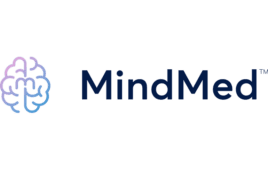
[nobeastsofierce/Adobe Stock]
Drug developers, such as Boston-based Delix Therapeutics and Onsero Therapeutics, aim to develop compounds that trigger neuroplasticity in what they deem to be a safer and more accessible therapeutic option than classic psychedelics.
Meanwhile, players such as Compass Pathways (Nasdaq:CMPS) and Small Pharma (CVE:DMT), are working to develop therapies inspired by classic psychedelics.
Neuroplasticity and antidepressant effects
Emerging research in prestigious publications such as Science and Nature continues to strengthen the case that serotonergic psychedelics promote neuroplasticity. Meanwhile, drug developers — most of them relatively small — continue to find that compounds can promote rapid and sustained relief from depressive symptoms.
A phase 2a clinical trial from Small Pharma, for instance, demonstrated that a single dose of N,N-dimethyltryptamine-based SPL026, demonstrated a strong antidepressant effect after one week. In a press release, the company’s chief medical and scientific officer Dr. Carol Routledge noted that “the antidepressant effect was sustained for six months in two-thirds of patients who were in remission at an earlier time-point in the study.”

Small Pharma’s Combined remission rates from one week to six months after receiving the open-label dose, showing the progression of patients’ remission rates over time. The compiled data includes all individuals who were administered either a single dose or both doses of SPL026. It also includes four participants who were omitted from the official statistical evaluation. These four individuals were given a blinded dose of SPL026 but did not receive a subsequent open-label dose. [Courtesy of Small Pharma]
Developing non-hallucinogenic psychoplastogens
The use of classic psychedelics, however, is not without risks and limitations. Speaking at a virtual event hosted by Charles River Laboratories, Delix chief scientific officer Dr. Kurt Rasmussen, noted potential safety risks associated with hallucinogens, including psychological distress, psychosis and potential cardiovascular risks. Additionally, Rasmussen highlighted researchers’ currently limited understanding of the optimal therapeutic window and dose frequency to optimize the desired therapeutic effects while minimizing side effects. “If you can eliminate the hallucinogenic effect, but not the efficacy, that would be ideal for many patients who can’t or won’t take hallucinogens,” he said. “If it’s possible to create a compound that has the same beneficial effects as the original but without the hallucinogenic side effects, it could be a promising option for patients who are unable or unwilling to take hallucinogenic compounds,” Rasmussen continued.
The University of California, Davis professor David E. Olson, together with his colleague Valentina Popescu, coined the term “psychoplastogen.” In 2018, Olson wrote that such compounds could lead to a paradigm shift in treating brain disorders, shifting away from correcting “chemical imbalances” toward “achieving selective modulation of neural circuits.”
The term psychoplastogen is “taken from the Greek roots of psych-, plast- and -gen — mind, molding and producing,” Rasumessen said. But the term has the advantage of avoiding “the hallucinogen debate,” he said. “It encompasses the functional activity of the compounds.”
“The concept of ‘psychoplastogens’ may be a useful way to describe these compounds, as it emphasizes their functional activity and ability to produce changes in neuroplasticity without necessarily causing hallucinations,” Rasmussen said.
These compounds promote rapid and enduring neuroplasticity without causing hallucinations. “These compounds are in vitro having an effect. They’re getting in in vivo. They’re clearly changing the morphology, which has a functional effect,” Rasmussen added.
Skipping the trip
Developers of the new therapeutic class are optimistic that they could be safe, fast-acting and long-lasting. Other researchers are working on similar projects, aiming to preserve the ability of psychedelics and ketamine to induce therapeutic changes in the brain while reducing or eliminating the “trip” they create. One example is the Germany-based HMNC Brain Health, which is developing an oral prolonged-release ketamine formulation known as Ketabon (KET01).
In many respects, the interest in off-label use of ketamine for mood disorders has helped lay the groundwork for research into psychoplastogens. That’s because ketamine demonstrated that it is possible to increase neuroplasticity in individuals while decreasing symptoms of depression and anxiety, Rasmussen said. “Ketamine treatment leads to a brief period of disassociation, followed by immediate relief of symptomology that is better the next day and can last for several days,” he said in the Charles River Laboratories event.
Other researchers also note that classic psychedelics have a similar ability to promote neurogenesis and synaptogenesis in vitro and in vivo.
Filed Under: Drug Discovery, Psychiatric/psychotropic drugs





Tell Us What You Think!
You must be logged in to post a comment.